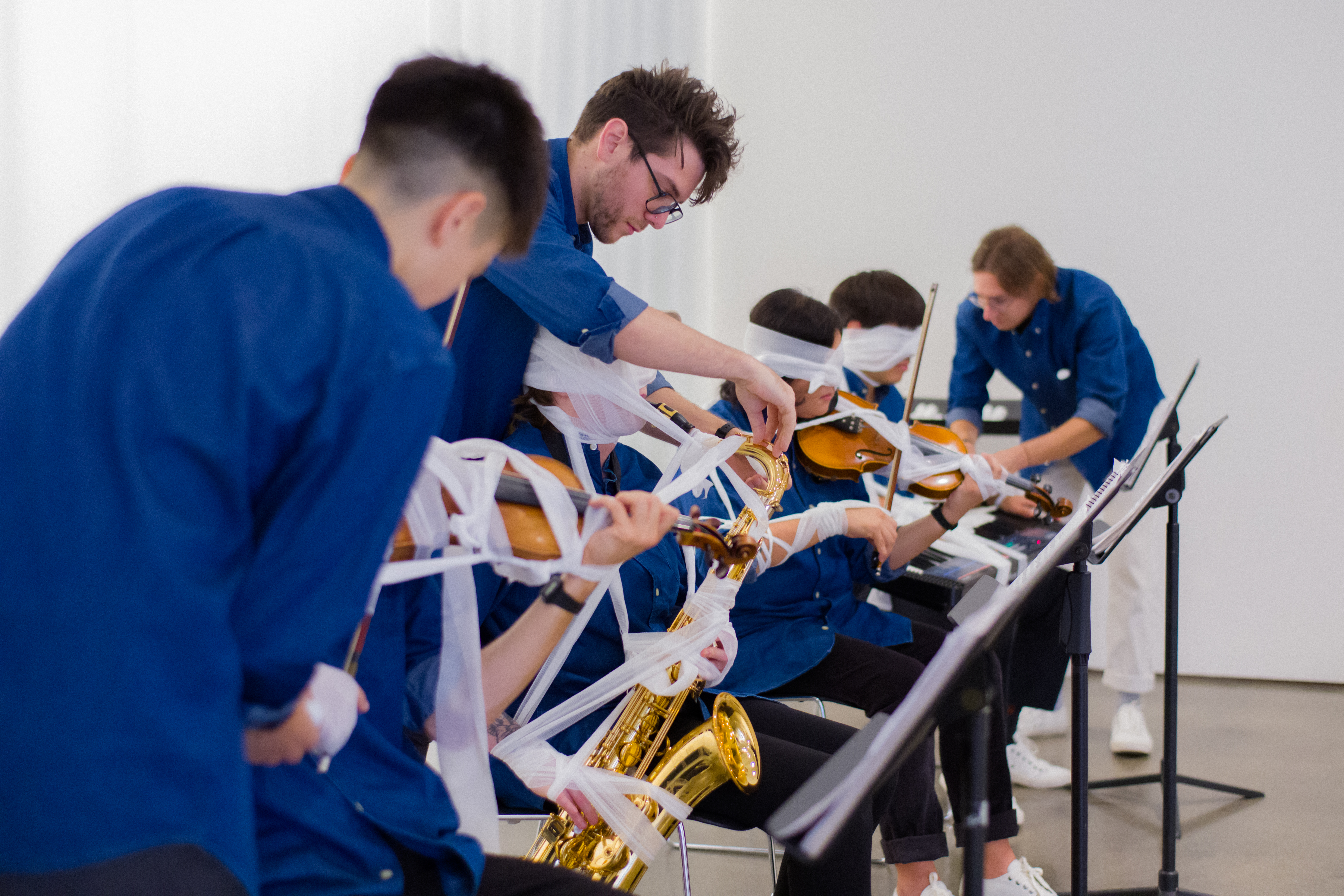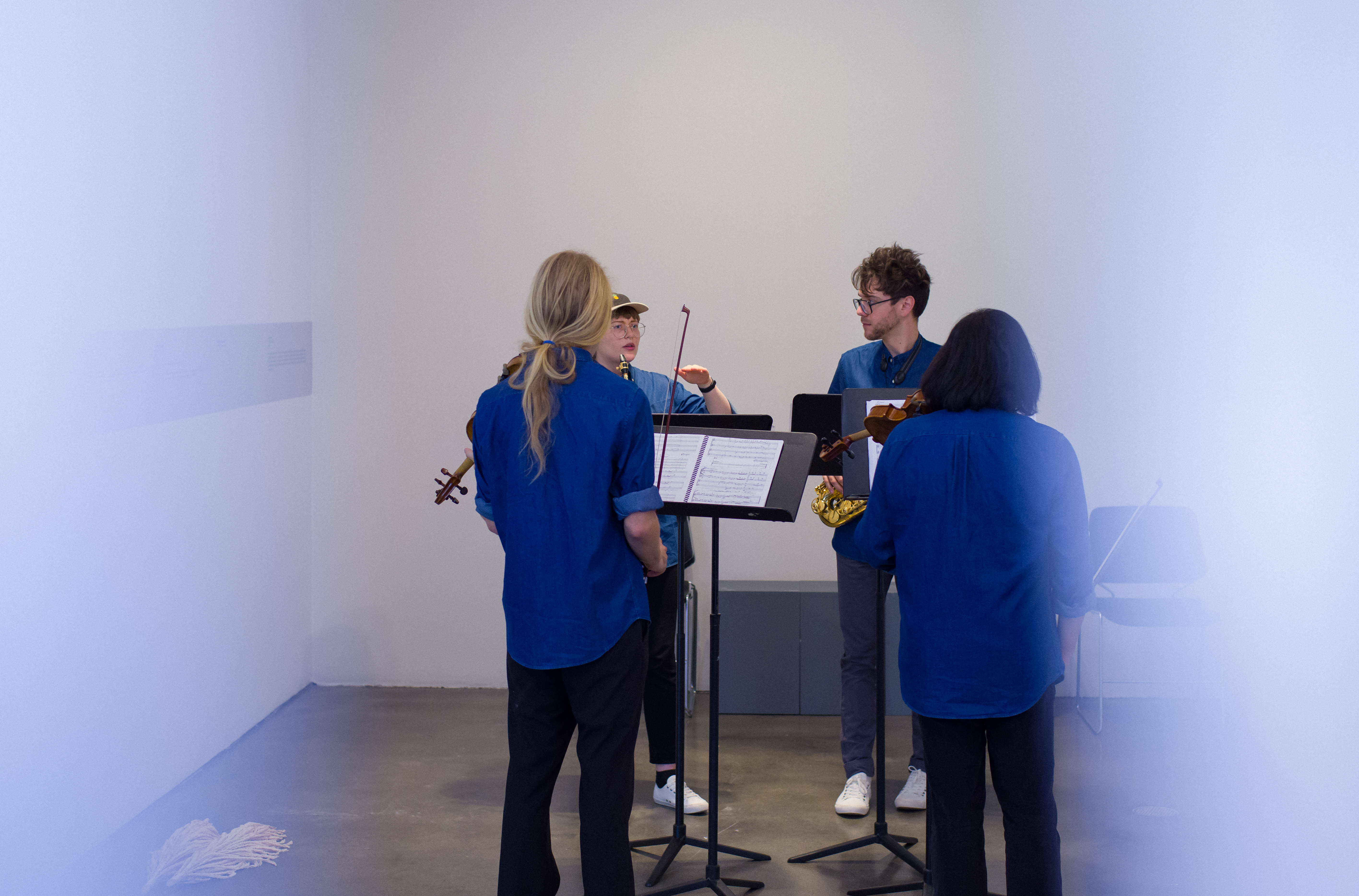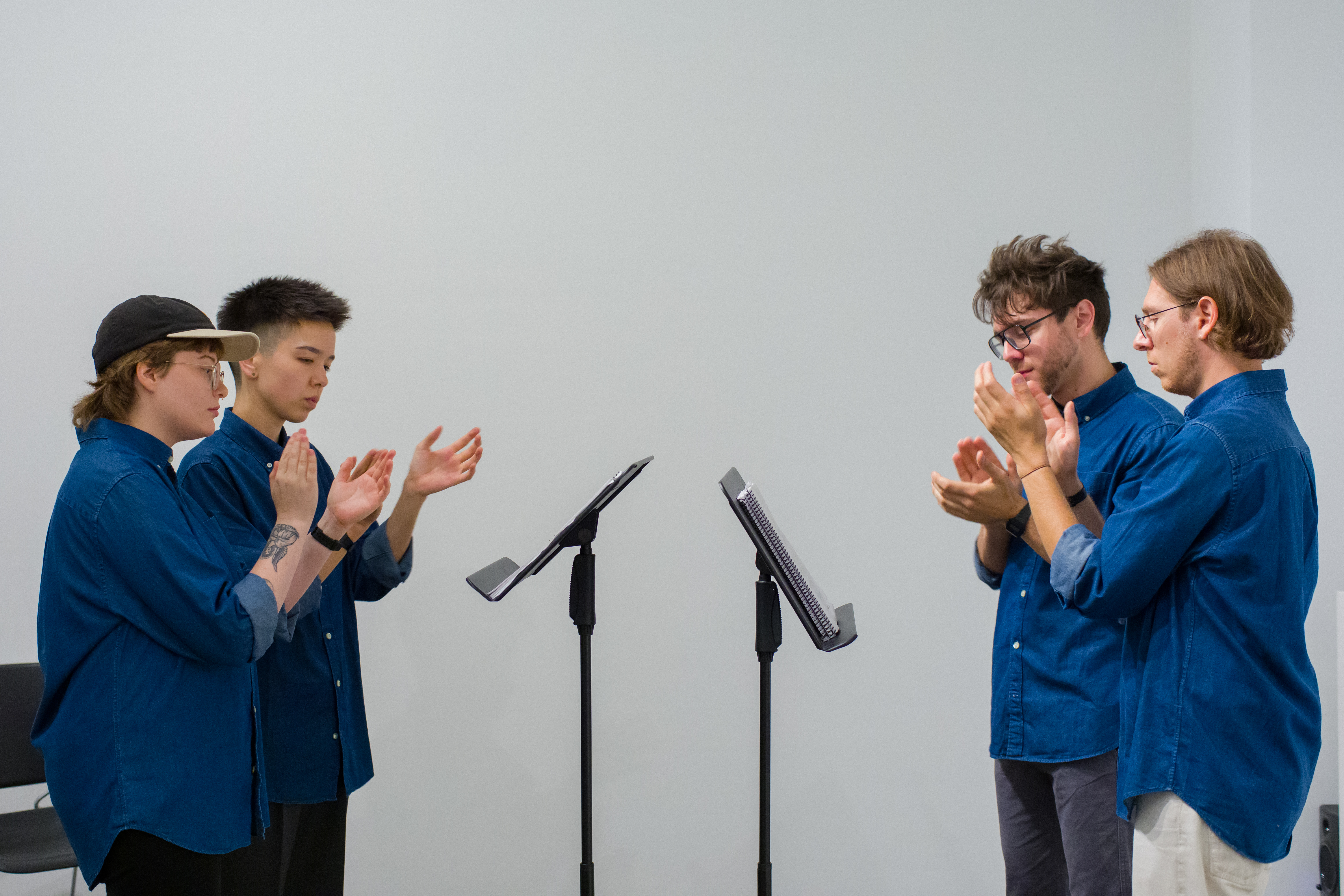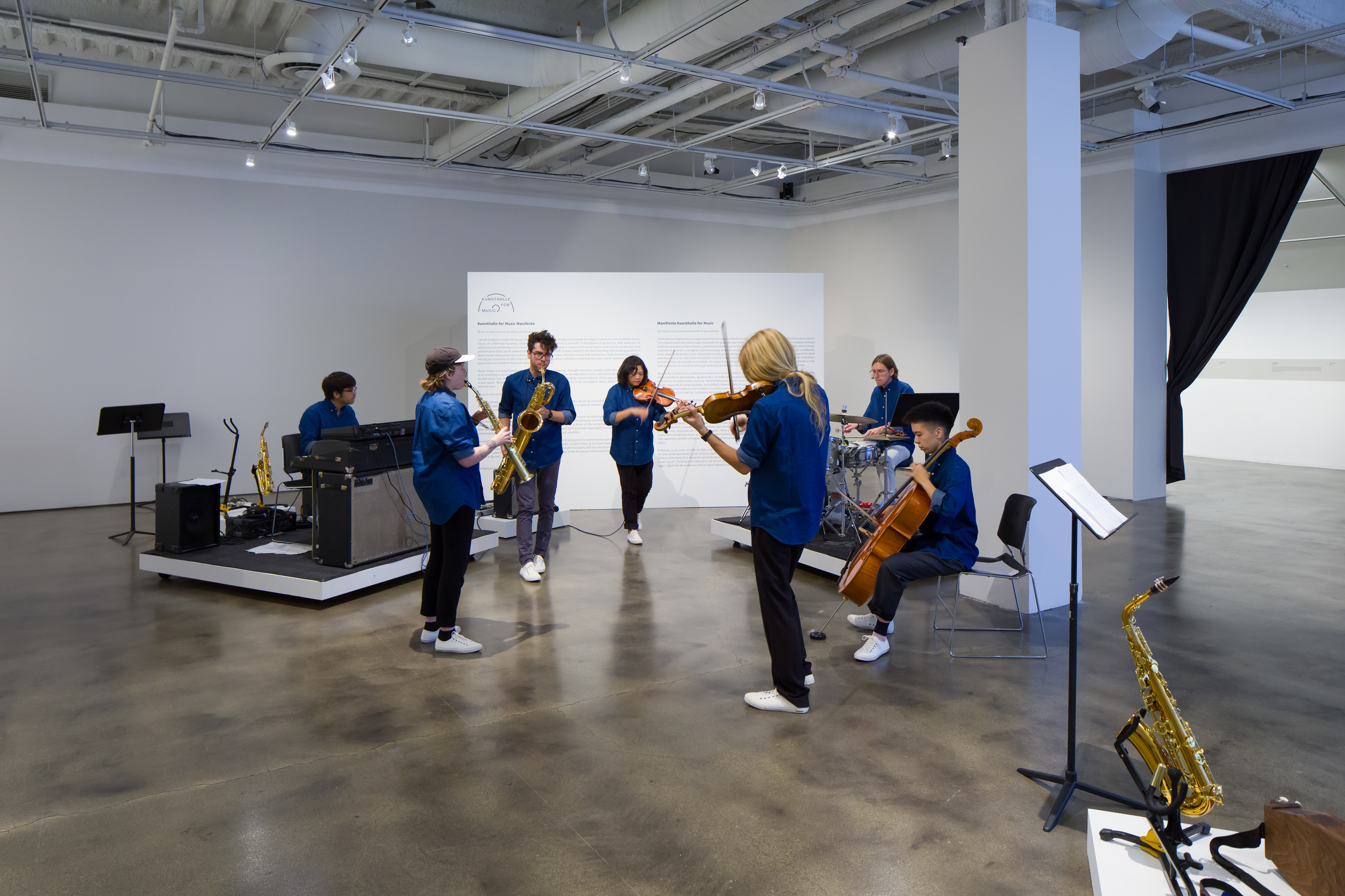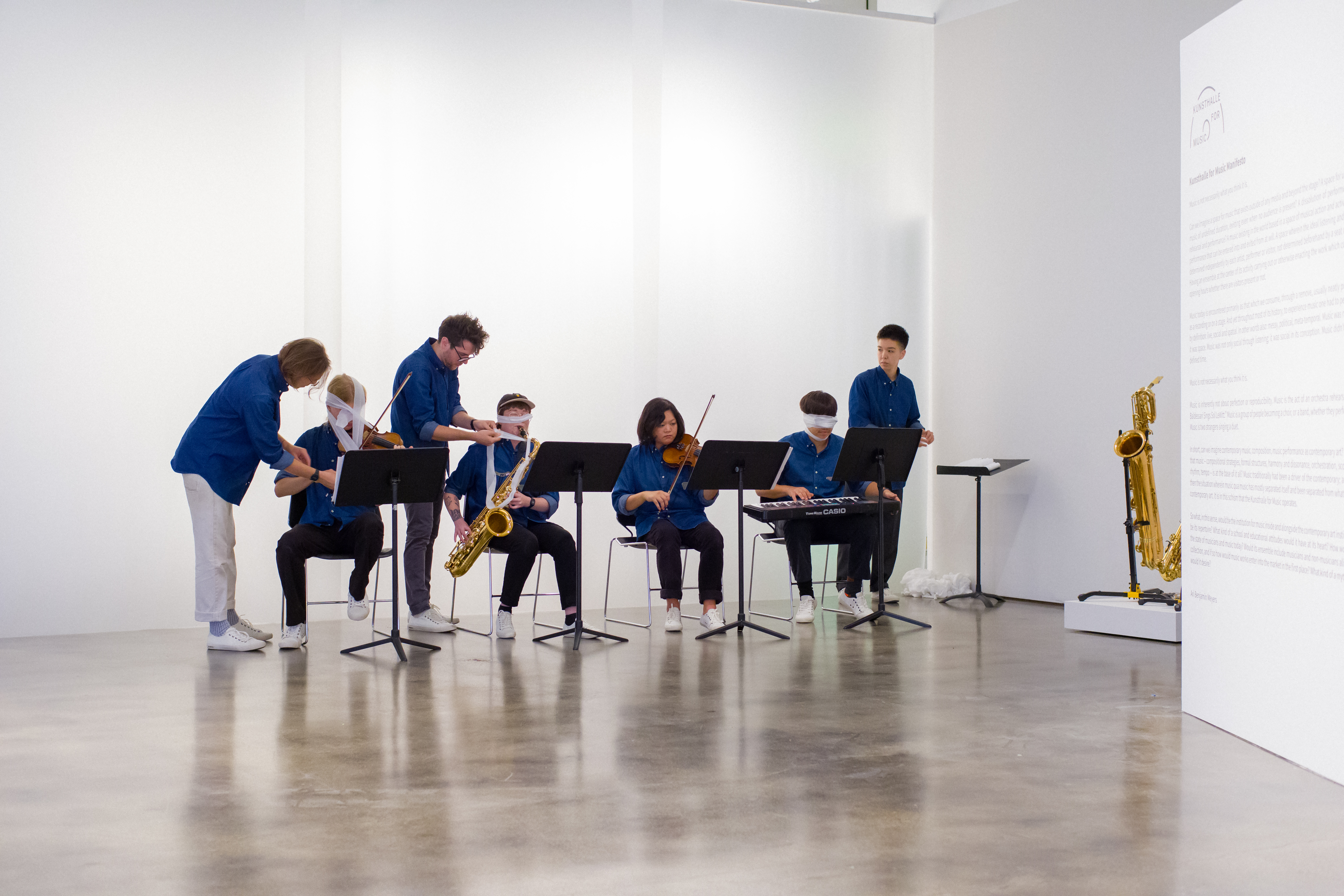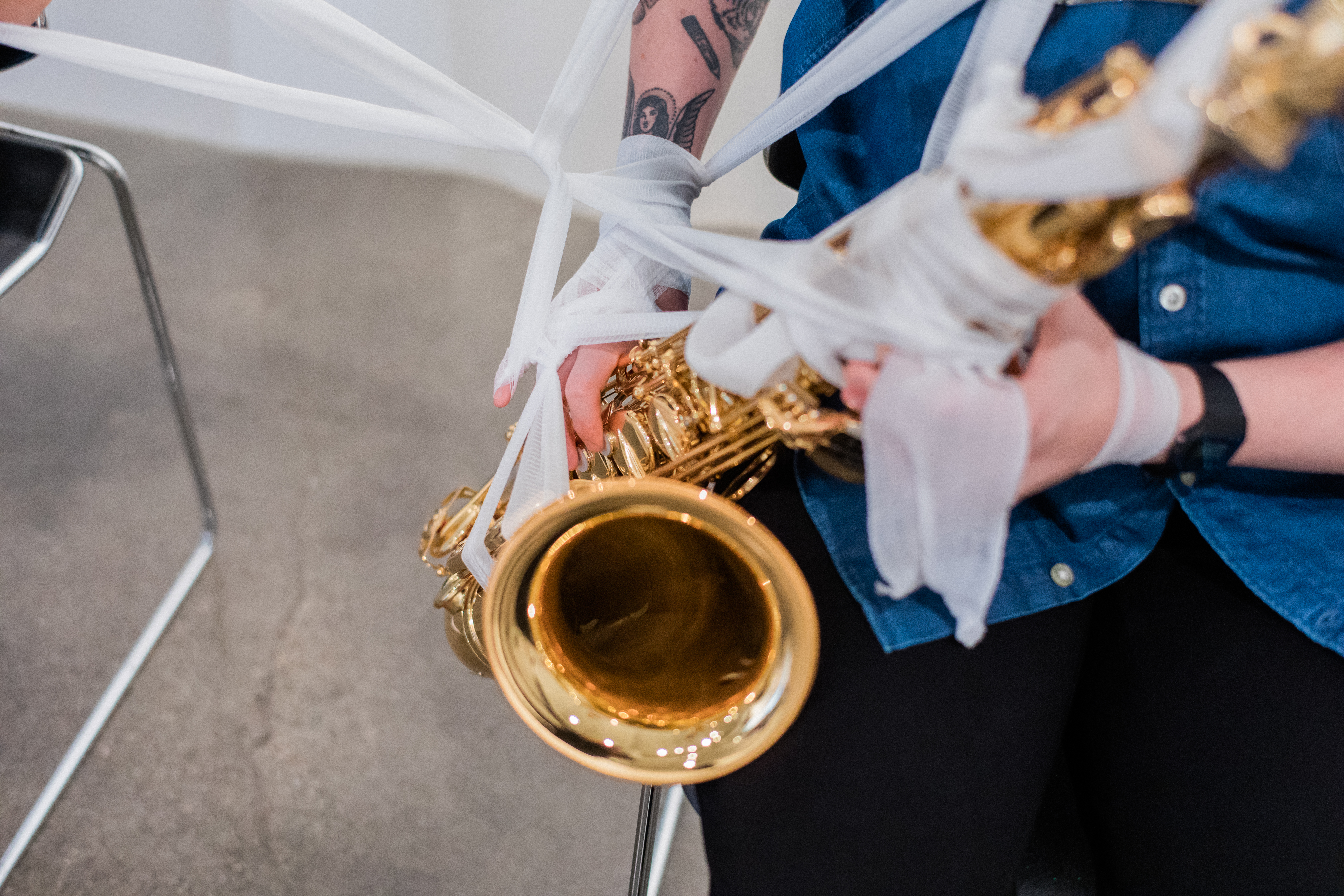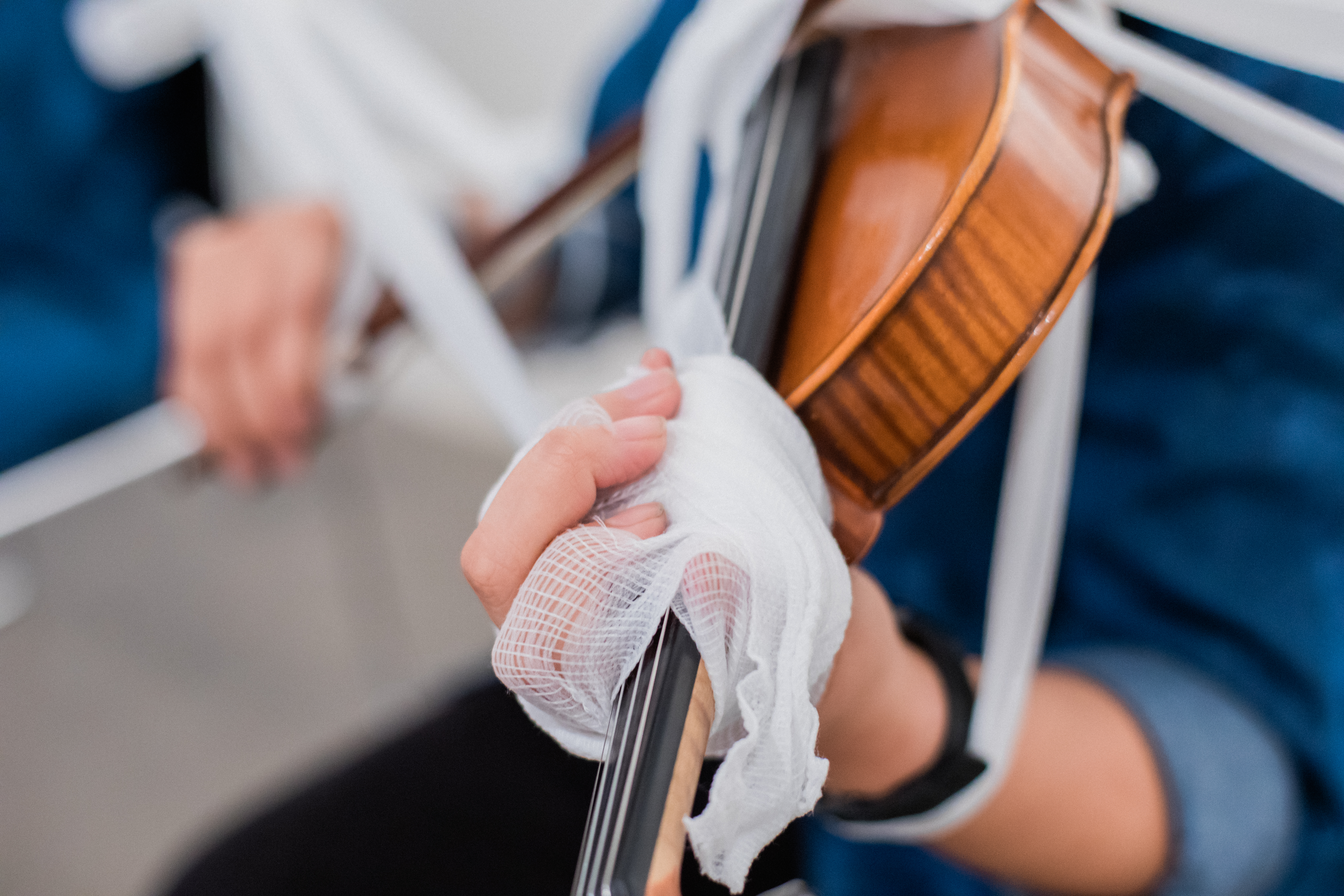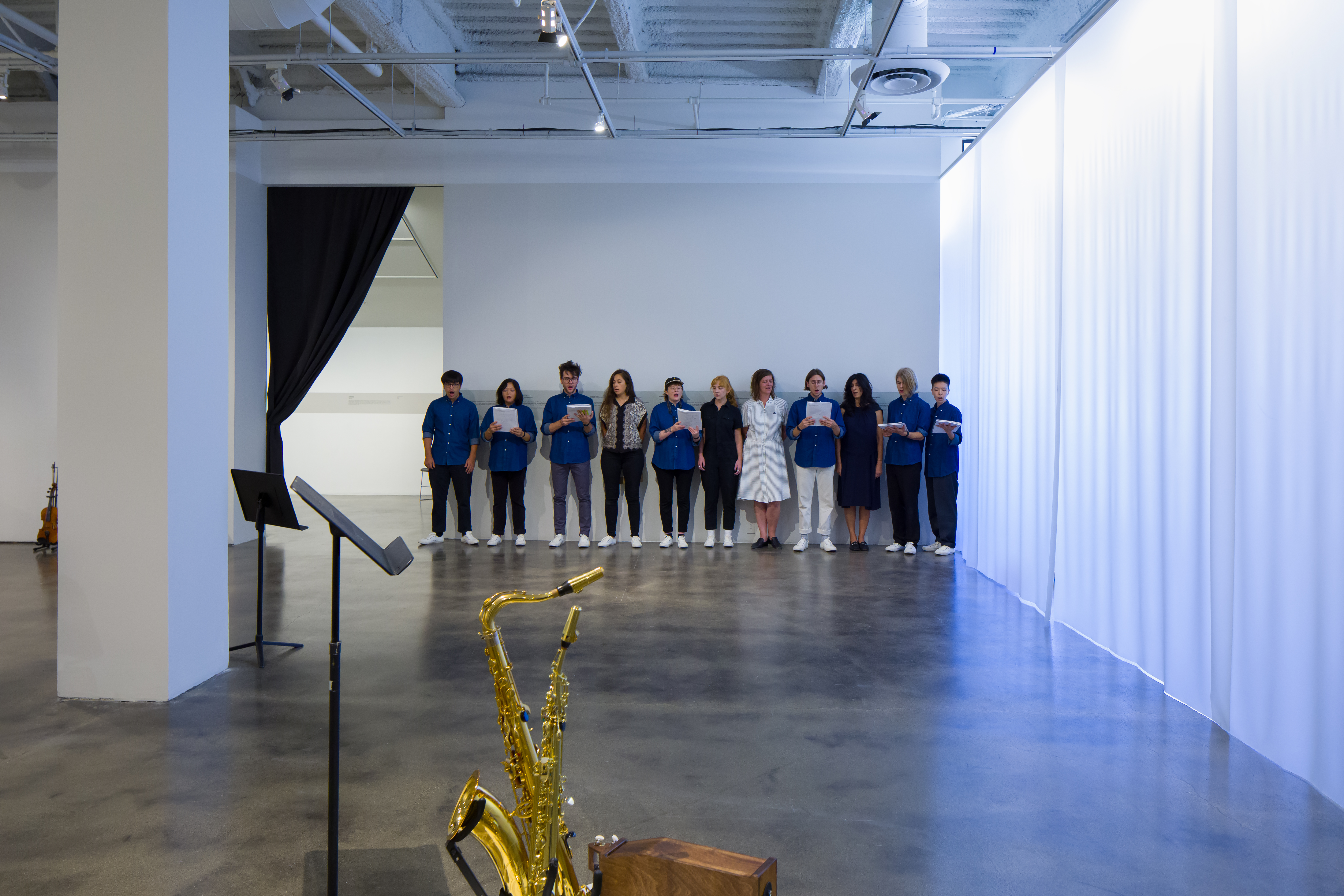‘Kunsthalle for Music’ at MCASB
Ari Benjamin Meyers Brings Modern Music into the Gallery
At the top of the tiled staircase that leads from Chapala Street to the second level of the Paseo Nuevo, an adventure awaits that stands among the most ambitious performance projects yet attempted by a museum in our city. Ari Benjamin Meyers, a Yale- and Juilliard-trained composer based in Berlin has joined forces with the Museum of Contemporary Art Santa Barbara for Kunsthalle for Music, an experiment in recontextualizing both modern composition and the notion of the gallery.
Seven young musicians, many of whom are products of the dynamic program at CalArts, will be in residence there five days a week, four hours a day, making all kinds of gloriously anarchic music, from John Cage and Philip Glass to Julius Eastman, Yoko Ono, and, of course, Ari Benjamin Meyers. Clad in white sneakers from Seavees, black or grey trousers, and identical blue shirts, these talented players move throughout the gallery space at preset intervals, picking up various instruments and performing compositions from a long list created by Meyers and posted around the walls of the room.
Although Kunsthalle for Music includes much that will be familiar to anyone with a fan’s knowledge of minimalism — for example, I caught a crisply rendered version of Steve Reich’s Clapping Music from 1972 — there’s enough variety and outright surprise to satisfy even the most jaded of performance art regulars. I particularly enjoyed the journey I took with Nigel, one of the violinists, up and down in the Paseo Nuevo elevator for a work by Meyers called, tongue firmly in cheek, “Elevator Music.” Music stand in one hand and violin in the other, the performer strode out of the gallery and took up a position at the rear of the elevator cabin. He played what was written whenever the doors were shut and stopped when they were open. Several people got on and off during the 10-minute performance, and their responses ranged from the mild bemusement of a hip middle-aged man to the wide-eyed astonishment of a toddler.
The elevator excursion brought home one key aspect of the Kunsthalle for Music experience, and that’s the fact that it cannot be fully understood by staying put in one place. I found myself shifting position frequently on the afternoon I was there, both in order to follow the musicians, who are also moving around in the space, and to take advantage of the unconventional way that the exhibition is organized. For Meyers, this dislocation is part of the point, “It is kind of a radical approach” he said, “because it’s happening all the time. It’s not delineated into neat packages of a concert or a music event or a music night. It is the exhibition.”
Back in the gallery, I heard one piece that ended when the players were slowly wrapped in surgical gauze, and then witnessed another in which the sounds they made are entirely incidental. This composition by Meyers calls for the musicians to form a tight circle around their conductor and move their arms and torsos in response to his similarly expressed instructions. This uncanny choir of conductors mesmerized me for 15 minutes or more, and gradually the fact that the piece has a traditional structure, with themes, variations, and sections, reveals itself. In the finale, the players began to breathe heavily as they put more emphasis into their movements, and I saw the physical analogue of an orchestra as it reached a crescendo. It’s a thrilling moment, and an unexpected one.
Who could ask for anything more?
4•1•1 | Kunsthalle for Music is free and open to the public Wednesdays, 1-6 p.m.; Thursdays and Fridays, 2-7 p.m.; and Saturdays and Sundays, noon-5 p.m. See mcasantabarbara.org.

